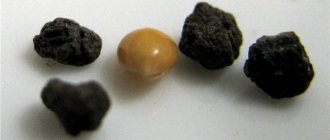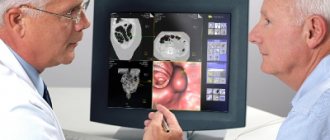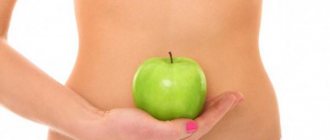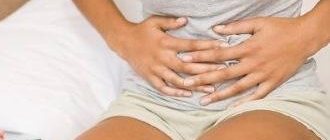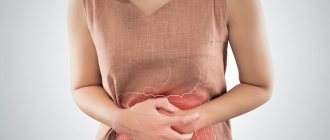Incomplete bowel movement syndrome is a fairly common disease among residents of large cities. It is dangerous, first of all, because it can cause severe emotional and physical discomfort, significantly reducing the patient’s overall quality of life.
Often the syndrome itself is only a symptom of more serious proctological diseases, such as hemorrhoids, rectoceles, condylomas or polyps. One way or another, accompanied by constipation or diarrhea, pain and discomfort, this disorder of digestive function, sooner or later and for various reasons, but arises in the life of every person.
What is constipation?
To understand what symptoms characterize constipation, or, as doctors say, colostasis, you need to determine the physiological norms of defecation. They depend on individual characteristics: functional activity and the state of the microflora of the digestive tract, the nature of nutrition. A number of external conditions also play a role.
Gastroenterologists consider the following to be the norm:
- emptying the rectum from three times a day to once every three days;
- daily volume of feces from 200 g to 40 g;
- soft feces, shaped like a cylinder;
- no need for prolonged straining (more than 25% of the time of defecation) when visiting the toilet “in a big way”.
Of course, the concept of normal is individual, but there are still general signs that indicate a bowel disorder.
Symptoms of constipation in adults1:
- stool less often than once every three days;
- daily stool volume less than 35 g;
- dry fragmented (“sheep”) feces;
- severe and prolonged straining, occupying more than 25% of the time from the moment the urge to defecate occurs until bowel movement 1.
In addition, subjective sensations must be taken into account in the diagnosis of colostasis1:
- pain when going to the toilet “in a big way” - dense feces injure the anal mucosa, which causes its inflammation;
- feeling of incomplete bowel movement;
- inability to free the rectum and a feeling of “blocking”;
- the need for prolonged pushing during bowel movements, even despite soft stool;
- forced use of fingers (pressure on the perineum) to successfully remove feces1.
It is important to understand that constipation cannot be diagnosed by one of the symptoms described above1,2. For example, the passage of small portions of dense feces and the feeling of incomplete emptying of the rectum, even with daily bowel movements, indicate the presence of colostasis, and soft, large stools every four days in the absence of discomfort can be considered normal.
Abnormal bowel movements can be chronic. According to international experts in the field of gastroenterology, to diagnose chronic constipation, it is enough that two of the above signs are observed in a quarter of bowel movements throughout the year for three months1,2:
Up to contents
Fecal incontinence
print version- home
- >
- For patients
- >
- Doctors' advice
- >
- Recommendations from the US Department of Health and Human Services
Where can I get tested?
| If treatment doesn't help | Popular about gastrointestinal diseases | Stomach acidity |
On the website GastroScan.ru in the Literature section there is a subsection “Popular Gastroenterology”, containing publications for patients on various aspects of gastroenterology.
Fecal incontinence
The National Digestive Diseases Information Clearinghouse of the US Department of Health & Human Services has prepared a number of recommendations and tips for patients regarding digestive problems. These recommendations are devoted to fecal incontinence
(synonymous
with encopresis
).
Content:
- What is fecal incontinence?
- Who suffers from fecal incontinence?
- How does the intestine control bowel movements?
- What are the causes of fecal incontinence?
- What tests are performed for fecal incontinence?
- How is fecal incontinence treated?
- Keep a food diary
- What foods contain fiber?
- Discomfort in the anal area
- Practical advice for patients with fecal incontinence
- If your child suffers from fecal incontinence
- What to remember
- Research offers hope
- Where to get more information
- Acknowledgments
What is fecal incontinence?
Fecal incontinence is generally referred to as a loss of control over bowel movements, resulting in the inability to hold a bowel movement until reaching the toilet. Fecal incontinence also includes involuntary leakage of solid or liquid stool, such as by the passage of gas. The word "chair", in this context, is synonymous with the word "feces".
Who suffers from fecal incontinence?
Fecal incontinence affects nearly 18 million American adults, or about one in twelve. Fecal incontinence is not always a consequence of the aging process, but it is more common in older people. Fecal incontinence is slightly more common in women than in men. Having any of the following problems may increase your risk of fecal incontinence:
- diarrhea;
- disease or injury affecting the nervous system;
- general poor health caused by several chronic or long-term illnesses;
- difficult childbirth with injuries to the pelvic floor muscles, muscles, ligaments and tissues supporting the uterus, vagina, bladder, rectum.
How does the intestine control bowel movements?
The intestines control bowel movements through the coordinated muscles and nerves of the rectum and anus, delaying the exit of stool or, conversely, releasing it. To retain stool, the last part of the colon, the rectum, must be kept under tension. The stool, by the time it enters the rectum, is usually quite dense. A circular muscle called a sphincter is tightly compressed, like a rubber ring, around the opening at the end of the rectum, the anus. They remain in a state of compression until the stool prepares to be released during defecation. The pelvic floor muscles help maintain intestinal tone.
What are the causes of fecal incontinence?
There are many reasons that can cause fecal incontinence:
- diarrhea
- constipation
- muscle damage or muscle weakness
- nerve failure
- decreased tone of the rectal muscles
- haemorrhoids
- pelvic floor dysfunction
Diarrhea.
Diarrhea can lead to fecal incontinence.
Loose stool fills the rectum faster and is more difficult to hold down than hard stool. Diarrhea increases your chances of not getting to the toilet on time. Constipation
.
Constipation, a condition in which a person has fewer than three bowel movements per week, can lead to fecal incontinence. With constipation, a large volume of hard stool sometimes forms and gets stuck in the rectum. Watery stool accumulates behind hard stool and may leak around hard stool. Long-term constipation can stretch and weaken the sphincter muscles, reducing the rectum's ability to hold stool. Muscle damage or muscle weakness.
Damage to the muscles of one or both anal sphincters can cause fecal incontinence.
If the external or internal anal sphincter muscles are damaged or weakened, they may not be strong enough to keep the anus closed and prevent stool from leaking. Damage to the sphincters can be caused by trauma, surgery for cancer or hemorrhoids. Nerve failure.
The anal sphincter muscles will not contract and relax properly if the nerves that control them are not working properly.
Likewise, if the nerve endings that respond to the concentration of stool in the rectum are not functioning properly, the person may not feel the urge to go to the toilet. Both types of nerve failure can lead to fecal incontinence. Possible sources of incorrect nerve function: childbirth, long-term habit of ignoring the urge to defecate, stroke, injuries and diseases affecting the nervous system, such as diabetes and multiple sclerosis. Decreased rectal muscle tone.
Normally, the rectum is able to stretch and store stool until defecation.
Rectal surgery, radiation therapy, and inflammatory bowel diseases such as Crohn's disease and ulcerative colitis can cause scarring of the rectal wall, making it less elastic. The rectum can no longer stretch properly to hold stool, increasing the risk of fecal incontinence. Haemorrhoids
.
External hemorrhoids, which develop under the skin around the anus, may prevent the anal sphincter muscles from completely closing the anus. In this case, a small amount of mucus or loose stool may leak through the anus. Pelvic floor dysfunction
. Improper functioning of the pelvic floor muscles or nerves can lead to fecal incontinence due to:
- decreased sensitivity of the rectum to stool filling it
- reducing the compressive ability of the muscles involved in bowel movements
- exit of rectal tissue through the anus, called rectal prolapse
- a bulge of the rectal wall into the vagina, called a rectocele
- relaxation of the pelvic floor, which may become weak and sag
Pelvic floor dysfunction may appear after childbirth. The risk of their occurrence is higher if obstetric forceps were used to remove the child or an episiotomy was performed - surgical dissection of the perineum of the mother in labor to avoid arbitrary ruptures of the vagina and birth traumatic brain injuries of the child. Fecal incontinence can appear either immediately after childbirth or several years later.
What tests are performed for fecal incontinence?
A doctor diagnoses fecal incontinence based on the patient's medical history, physical examination, and the results of diagnostic tests. Diagnosis is the key to treatment. Patients with problems with fecal incontinence may be asked the following questions:
- When did fecal incontinence start?
- How often do episodes of fecal incontinence occur?
- How much stool is leaked? Is it a chair or just soiled underwear? Is only a small amount of solid or liquid stool leaking? Or is there a complete loss of control over bowel movements?
- Is there a strong urge to defecate or does it occur without urge?
- If there are hemorrhoids, do the hemorrhoids come out through the anus?
- How does fecal incontinence affect everyday life?
- Do some foods seem to contribute more to fecal incontinence?
- Is the patient able to control flatulence (passing gas)?
Based on the answers to these questions, the attending physician may refer the patient to a specialist: gastroenterologist, proctologist, or colorectal surgeon. The specialist will examine you and may suggest one or more of the following diagnostic tests, which can be done in a hospital or clinic:
- Anorectal manometry
uses a pressure-sensitive tube to test the sensitivity and function of the rectum. Anorectal manometry also tests the ability of the anal sphincter muscles to provide the necessary compressive force and the ability to respond to nerve signals.
- Magnetic resonance imaging
(MRI) uses electromagnetic waves to produce detailed images of internal organs and soft tissue without the use of X-rays. An MRI can take images of the anal sphincter muscles.
- Transrectal ultrasound.
Ultrasound examination of the anus and rectum is performed using a special sensor called a transducer inserted into the anus. Ultrasound is a safe and painless procedure for the patient, in which images of these tissues are created using sound waves reflected from organs and tissues. Transrectal ultrasound can be used to assess the condition of the anal sphincter muscle structures.
- Proctography
, also called defecography, is an X-ray examination that shows how much stool the rectum can hold, how stool is distributed in the rectum, and how well the rectum performs bowel movements.
On the radiograph (V.D. Pasechnikov): defecography of normal defecation (left) and obstructive defecation (right).
- Sigmoidoscopy
, in which a flexible tube with an illuminator is inserted through the anus into the rectum and, further, into other lower parts of the colon, through which the intestine is examined from the inside in order to detect possible causes of fecal incontinence such as inflammation, tumors, scars.
- Electromyography
of the pelvic floor muscles and rectal muscles to determine the correct functioning of the nerves that control these muscles.
How is fecal incontinence treated?
Successful treatment is largely determined by correct diagnosis and identification of the problem. Treatment may include one or more of the following:
- food, diet, diet
- medicines
- exercises for the pelvic floor muscles
- bowel training
- surgery
- electrical stimulation.
Nutrition, diet, diet
The food eaten affects the density of the stool and the speed at which it passes through the gastrointestinal tract. If stools are difficult to control because they are too runny, foods high in fiber (dietary fiber) may add bulk and make stools more manageable. However, some patients find that high-fiber foods loosen their stools and worsen their fecal incontinence. Foods and drinks containing caffeine, such as coffee, tea, and chocolate, can relax the internal anal sphincter muscles and thereby contribute to fecal incontinence. The following dietary adjustments may improve fecal incontinence:
- Eat the right amount of protein. For many patients, fiber
(another name for
plant dietary fiber
) increases stool bulk, making it softer and easier to manage. Fiber can help with diarrhea and constipation. Fiber is found in fruits, vegetables, whole grains and beans. Fiber supplements are available in pharmacies and health food stores. Fiber foods are another universal way to treat fecal incontinence. A normal diet should include 20 to 30 grams of fiber per day. Fiber should be added gradually to avoid flatulence.
- Drink plenty. Eight 250-gram glasses of fluid a day can help prevent constipation. Water is a good choice. Drinks containing caffeine, alcohol, milk, or carbon dioxide should be avoided if they cause diarrhea.
Prolonged diarrhea can become an obstacle to the human body receiving sufficient amounts of vitamins and minerals. A doctor may recommend vitamin supplements to help treat this problem and provide information about what changes in food, diet, or nutrition may improve the patient's condition.
| Keep a food diary A food diary is used to identify foods that cause diarrhea and fecal incontinence. A food diary should record what foods are eaten, portion sizes, and when fecal incontinence occurs. After a few days, the diary may show a connection between certain foods and episodes of fecal incontinence. Reducing the number of such products can improve the situation. A food diary may also be useful for physicians treating patients with fecal incontinence. The list of foods and beverages that may be associated with episodes of diarrhea and fecal incontinence includes:
|
What foods contain fiber?Examples of foods containing dietary fiber | |
| Legumes, cereals, grains | Fiber content, g |
| ½ cup1 cooked Navy2, Pinto3, Kidney4, etc. beans | 6,2–9,6 |
| ½ cup ready-to-eat shredded unrefined wheat5 | 2,7–3,8 |
| ⅓ cup ready-to-eat 100% bran | 9,1 |
| One small muffin made from oat bran | 3,0 |
| One muffin (English muffin) made with whole grains | 4,4 |
| Fruits | |
| One small apple with peel | 3,6 |
| One medium-sized pear with peel | 5,5 |
| ½ cup raspberries | 4,0 |
| ½ cup prune compote | 3,8 |
| Vegetables | |
| ½ cup cooked pumpkin | 2,9 |
| One medium sweet potato, boiled with skins on | 3,8 |
| ½ cup boiled green peas | 3,5–4,4 |
| One small potato in its jacket (with skin) | 3,0 |
| ½ cup mixed cooked vegetables | 4,0 |
| ½ cup cooked broccoli | 2,6–2,8 |
| ½ cup cooked greens (spinach, kale, turnips) | 2,5–3,5 |
Source: USDA and US Department of Health and Human Services. Dietary Guidelines for Americans. 2010.
Medicines
If diarrhea is the cause of fecal incontinence, medication may help. To achieve bowel regularity, doctors sometimes recommend using laxatives that increase fecal bulk, such as Citrucel and Metamucil. Antidiarrheal medications, such as loperamide or diphenoxylate, may be recommended to slow bowel movements and improve bowel control.
Exercises for the pelvic floor muscles
Exercises aimed at strengthening the pelvic floor muscles sometimes lead to improved bowel function. The exercises involve squeezing and relaxing your pelvic floor muscles 50 to 100 times a day. The doctor, if necessary, will tell you about the correct technique for performing the exercises. Biofeedback therapy, which involves the use of sensors and devices that inform the patient whether he is controlling his muscles correctly, may also be useful. The success of strengthening the pelvic floor muscles through exercise depends on the cause of fecal incontinence, its severity, and the patient's ability to perform the exercises correctly.
Gut workout
Developing a daily bowel behavior routine can improve the situation with fecal incontinence, especially if fecal incontinence is associated with constipation. It is important to try to have bowel movements at a specific time, for example after each meal. Over time, the bowel will develop habits of doing certain things at the same time, thereby reducing constipation and associated fecal incontinence. Consistency over time is key to successful gut training. This type of gut training may take several weeks or months.
Surgery
Surgery may be an acceptable treatment option for fecal incontinence if it does not improve with other treatments or if fecal incontinence is caused by injury to the pelvic floor or anal sphincter. Sphincteroplasty
, the most common type of surgery for fecal incontinence, involves rejoining the separated ends of the sphincter muscles that have been severed during childbirth or other trauma. Sphincteroplasty is performed in a hospital by a colorectal surgeon, gynecologic surgeon, or general surgeon. Another operation involves placing an inflatable cuff called an "artificial sphincter" around the anus and implanting a small pump under the skin, activated by the patient, to inflate or deflate the cuff. This surgery is much less common and is performed in a hospital by a specially trained colorectal surgeon.
Electrical stimulation
Electrical stimulation of the pudendal nerve (or neuromodulation) involves placing electrodes on the nerve endings of the anal canal and rectum and continuously stimulating these endings with electrical impulses. This procedure uses a battery-powered stimulator placed under the skin.
| Discomfort in the anal area The skin around the anus is tender and sensitive. Constipation and diarrhea or skin contact with stool may cause pain or itching. The following steps may help reduce discomfort in the anal area:
|
Practical advice for patients with fecal incontinence
Because fecal incontinence can sometimes cause embarrassment, fear, and loneliness, practical steps to combat it are important. Treatment can significantly improve quality of life and help sufferers of fecal incontinence feel better. The first step is to seek medical help. The organizations listed at the end of this fact sheet can provide information, support and resources to help you find fecal incontinence specialists.
Recommendations for those suffering from fecal incontinence:
|
If your child suffers from fecal incontinence
If a toilet-trained child experiences fecal incontinence (encopresis), he or she should be seen by a doctor. Your doctor will be able to determine the cause of your fecal incontinence and recommend treatment. Fecal incontinence can occur in children due to a birth defect or medical condition, but in most cases it is due to constipation. Children often develop constipation due to retention of stool. They may hold stool because they feel uncomfortable about toilet training, are embarrassed to use a public restroom, do not want to interrupt play, or are afraid that they will have painful or unpleasant bowel movements. Just like in adults, constipation in children can lead to large, hard stools that become lodged in the rectum. Watery stool accumulates behind hard stool, causing unexpected leaks and soiling of the baby's underwear. Parents often mistake these contaminants for a sign of diarrhea.
What to remember
- Fecal incontinence is generally the inability to control the bowels and pass bowel movements before reaching the toilet.
- Fecal incontinence affects nearly 18 million American adults, or about one in twelve. People with fecal incontinence should not be afraid or embarrassed to talk to their doctor about it.
- Fecal incontinence is often caused by some health problem.
- Bowel control is accomplished through the nerves and muscles of the rectum and anus, which must work in concert to hold and release stool.
- Before defecation begins, the circular muscles located around the anus - the anus, called sphincters, must be tightly squeezed.
- The muscles, ligaments and tissues of the pelvic floor that support the uterus, vagina, bladder and rectum also help regulate bowel movements.
- Fecal incontinence can be caused by a variety of reasons, including diarrhea, constipation, muscle damage or weakness, nerve damage, loss of rectal compliance, hemorrhoids, and pelvic floor dysfunction.
- Doctors diagnose fecal incontinence based on the patient's medical history, physical examination, and medical tests.
- Successful treatment of fecal incontinence depends on correct diagnosis of the underlying causes of the disease.
- Treatment for fecal incontinence may include: dietary changes, diet, medications, pelvic floor muscle training, bowel training, surgery, electrical stimulation.
- A food diary can help identify foods that cause diarrhea and fecal incontinence.
- Steps that can help relieve anal discomfort include: washing the anal area after defecation, keeping the anal area dry, wearing breathable clothing and underwear, and quickly changing soiled underwear.
- Treatment for fecal incontinence is available. The first step is to seek medical help.
- In children, fecal incontinence can occur due to birth defects or illness, but in most cases it is due to constipation.
Research offers hope
The U.S. Department of Health and Human Services' National Institute of Diabetes and Digestive and Kidney Diseases (NIDDK) conducts and supports research into many types of digestive disorders, including fecal incontinence. NIDDK is researching ways to create new anal sphincter muscles in patients from their own cells and tissue. The US Food and Drug Administration (FDA) is currently reviewing the pudendal nerve stimulation technique, a method used in Europe to treat fecal incontinence. This method involves implanting a small electronic device that stimulates the sacral nerves that run from the spinal cord to the anal sphincter muscles. Clinical trial participants can take a more active role in their own health, gain access to new treatments before they become widely available, and help others by contributing to medical research. For information about ongoing trials, visit www.ClinicalTrials.gov.
Where can I get more information?
Fact sheets and initial reading booklets on fecal incontinence and related conditions are available from the National Digestive Diseases Clearinghouse and its website at www.digestive.niddk.nih.gov, including ( all in English
): "What you need to know about bowel management" - "Constipation"
- "Constipation in children"
- "Diarrhea"
- "What I need to know about bowel movements (for initial reading)"
- "What I Need to Know About Constipation (Initial Reading)"
- "What I Need to Know About Diarrhea (Initial Reading)"
American Academy of Family Physicians. PO Box 11210, Shawnee Mission, KS, USA 66207–1210. tel: 1–800–274–2237 or 913–906–6000, e-mail, www.aafp.org American College of Gastroenterology. PO Box 342260, Bethesda, MD, USA 20827–2260 Tel. 301–263–9000, www.acg.gi.org. American Neurogastroenterology and Motility Society, 45685 Harmony Lane, Belleville, MI, USA 48111, Tel. 734–699–1130, e-mail, www.motilitysociety.org. International Foundation for Functional Gastrointestinal Disorders. PO Box 170864, Milwaukee, WI, USA 53217–8076 Tel. 1–888–964–2001 or 414–964–1799, e-mail, www.iffgd.org. The Simon Foundation for Continence. PO Box 815, Wilmette, IL, USA 60091, Tel. 1–800–23–SIMON (1–800–237–4666) or 847–864–3913, www.simonfoundation.org.
Acknowledgments
NDDIC publications are carefully reviewed by both NIDDK scientists and outside experts. The original version of this publication was reviewed by Arnold Wald, MD, University of Pittsburgh Medical Center; Paul Hyman, MD, University of Kansas Medical Center and Diane Darrell, APRN, BC, College of Nursing Research, Kansas.
Bowel Management Awareness Campaign
The National Institute of Diabetes and Digestive and Kidney Diseases (NIDDK) is leading a campaign to disseminate evidence-based information about the symptoms, diagnosis and treatment of fecal incontinence. The information campaign was initiated by the National Information and Analytical Center for Digestive Diseases, a service of NIDDK. To download the original publication and learn more about this information campaign, visit www.bowelcontrol.nih.gov.
| You can also find more information on this topic by visiting MedlinePlus at www.medlineplus.gov. This publication contains information about medications. The latest information has been included in the preparation of this publication. For updates or questions about any drug, you can contact the US Food and Drug Administration toll-free at 1-888-INFO-FDA (1-888-463-6332) or visit www.fda. gov. Consult your doctor for more information. |
| The US Government does not endorse or patronize any specific commercial product or company. Trademarks, proprietary names or company names mentioned in this document are used only because they are considered necessary in the context of the information presented. If a product is not mentioned, it does not mean or imply that the product is unsatisfactory. |
National Information and Analytical Center for Digestive Diseases
2 Information Way, Bethesda, MD 20892–3570 Tel. 1–800–891–5389, TTY: 1–866–569–1162, fax 703–738–4929, e-mail: [email protected] , www.digestive.niddk.nih.gov. The National Digestive Diseases Clearinghouse is a service of the National Institute of Diabetes and Digestive and Kidney Diseases (NIDDK). NIDDK is one of the National Institutes of Health of the US Department of Health and Human Services. Founded in 1980, NDDIC provides information about digestive diseases to patients with digestive disorders, as well as their families, healthcare professionals and the public. NDDIC responds to requests, develops and disseminates publications, and works closely with health care professional organizations, patient organizations, and government agencies to coordinate resources in the field of gastroenterology. NDDIC publications are carefully reviewed by both NIDDK scientists and experts external to NIDDK. This publication is not protected by copyright. NDDIC encourages the reproduction and distribution of this publication in as many copies as necessary. NIH Publication No. 11-4866.
April 2011. Last updated April 30, 2012. ——————————————————————————————————
Translator’s notes.
1) Cooking cup = 227 cc.
cm liquid. 2) Navy beans are a variety of common beans. It has long been a staple of the US Navy menu. Today it is traditionally included in the daily menu of senators. 3) Pinto beans - common variegated beans 4) Kidney beans - common red beans 5) Possibly in the form of breakfast cereals made from unrefined wheat with added bran without sugar and salt, common in the USA, or bars made from compressed thin twisted wheat straws (see illustration) . Illustrations added during translation.
Back to section
| Diagnosis of gastrointestinal diseases | Symptoms of gastrointestinal diseases | Advice from doctors in the USA, Russia, etc. | Heartburn and GERD |
Causes of constipation
Stool retention is a widespread problem. According to statistics, in developed countries, up to 50% of adults and up to 20% of children have problems with defecation to one degree or another2. Moreover, stool retention can occur for a variety of reasons.
Stool retention can be caused by external factors, various diseases and conditions of the body. The most common of them are the following.
Lifestyle and nutrition
- The predominance in the diet of refined foods low in dietary fiber (flour, meat dishes, cereals made from refined grains, etc.) leads to the death of the normal microflora of the digestive tract, which makes up almost half of the dry residue of feces2 and a decrease in intestinal motility due to a decrease in the volume of feces wt.
- Insufficient fluid intake is usually accompanied by hardening of stool and slower peristalsis.
- Low physical activity and sedentary work can lead to weakening of the abdominal muscles involved in bowel movements1.
Physiological conditions
- Symptoms of constipation during pregnancy are associated with a physiological increase in the level of the hormone progesterone, which reduces the tone of the smooth muscles of the intestine and its motor activity, as well as with difficulty moving feces as a result of compression of the colon by the growing uterus.
- Difficulty defecating in older people is twice as common as in younger people2. Most likely, this is due to age-related changes such as general weakening of muscles, slower peristalsis and digestion, prolapse of organs and other processes.
Endocrine disorders
Constipation in adults and children can be a sign of endocrine disorders and accompany such conditions2 as:
- diabetes mellitus, characterized by impaired carbohydrate metabolism;
- hypothyroidism, or decreased thyroid function;
- hyperparathyroidism – excessive hormonal activity of the parathyroid glands;
- hypercalcemia - increased calcium levels in the blood;
- hypokalemia – decreased potassium levels in the blood;
- uremia – an increase in the blood level of toxic products of protein metabolism as a result of renal failure2.
Neurological diseases
Since intestinal motility is regulated by the nervous system, in adults, symptoms of constipation can occur as one of the manifestations of stroke, chronic cerebrovascular accident, Parkinson's disease, multiple sclerosis and other neurotic diseases1.
Psycho-emotional disorders
The influence of the psyche on the digestive system can be observed in acute and chronic stress, anxiety disorders, and depressive states2. Impaired defecation in the form of colostasis occurs as a symptom of irritable bowel disease, among the causes of which doctors primarily identify psychological problems2.
Impaired patency of the digestive tract
Stool retention can occur when there are mechanical obstacles to the movement of intestinal contents, for example, as a result of postoperative complications, adhesions, colon tumors2.
Side effects of drugs
Colostasis can be a consequence of the side effects of certain medications: antihypertensives, diuretics and non-steroidal anti-inflammatory drugs, antidepressants, anticonvulsants and antiulcer drugs, antispasmodics1,2.
Functional problems of the pelvic floor
Stool retention can be caused by muscle weakness and prolapse of the rectum, uncoordinated work of the anal sphincters, increased tone and paradoxical contraction when the urge to defecate occurs, and other factors.
Up to contents
Possible causes of the disease
One of the causes of irritable bowel syndrome is infectious gastroenteritis. About 30% of patients who presented with symptoms of this disease suffered an infection. The exact cause-and-effect relationships between certain factors and signs of irritable bowel disease have not been established. Modern experts believe that the development of pathological processes is facilitated by decreased sleep quality, poor nutrition, chronic stress and other unfavorable factors, which, for the most part, depend on the patient himself. That is why, in most cases, treatment involves the development of a dietary menu and lifestyle correction.
Some of the causes of irritable bowel syndrome include:
- stress, neuroses, depressive states;
- eating foods high in fat;
- abuse of caffeinated drinks;
- lack of physical activity, leading to weakening of the abdominal muscles;
- deficiency of lactobacilli in the body;
- changes in intestinal motility. If motility speeds up, this leads to the development of diarrhea. If it slows down, constipation may occur. Changes in motor skills are accompanied by pain due to sudden muscle contraction;
- hormonal imbalance. A connection between exacerbation of irritable bowel syndrome and the phases of the female cycle has been identified. In some cases, the disease may occur during pregnancy or lactation.
Risk factors for irritable bowel syndrome also include:
- age category over 50 years;
- genetic predisposition (family history);
- taking a course of antibiotics;
- anemia, leukocytosis;
- staying in an area with a high level of infectious diseases;
- development of tumor processes.
What are the dangers of constipation?
Long-term retention of feces in the colon is accompanied by the development of rotting and fermentation processes, which occur with the formation of large amounts of gases and the release of toxic breakdown products of proteins and carbohydrates1,2. Excessive accumulation of gases is accompanied by the development of flatulence, a feeling of heaviness, bloating and pain in the abdomen. Absorption of toxins leads to nausea, “dirty” coating on the tongue, bad breath, headaches, weakness and decreased performance1,2. The mucous membrane of the colon becomes inflamed, polyps may appear on it, which are dangerous for degeneration into malignant tumors.
From the point of view of the development of colon cancer, the following are considered warning signs for constipation2:
- progression of problems with bowel movements in the absence of them in the past;
- age 50 years and older;
- the appearance of scarlet or dark blood in the stool;
- pallor of the skin and visible mucous membranes, which may indicate the development of anemia;
- losing weight without changing eating habits and diet;
- cases of colon cancer in close relatives2.
In the case of chronic problems with bowel movement, especially when the above-described alarming symptoms appear, a doctor’s consultation and examination are required to clarify the causes of bowel movements and exclude cancer.
Up to contents
Diagnostic measures
Comprehensive diagnostics includes taking an anamnesis, examining the patient’s complaints by a specialist, laboratory tests, and instrumental methods. The list of diagnostic measures may include:
- clinical blood test. Using this method, inflammatory processes in the body (increased ESR levels) and the presence of anemia (low hemoglobin levels) are detected. Your doctor may order a blood test to check for celiac disease. This is a specific disease of the digestive system, in which the process of digesting food entering the body is disrupted, which can cause diarrhea. Additional tests may also be prescribed to check the body for lactose tolerance;
- general urine analysis. Makes it possible to identify the presence of microorganisms that provoke gastrointestinal diseases, and, accordingly, to exclude irritable bowel syndrome;
- study of the composition of feces - allows you to determine the degree of digestibility of food, the presence of damage to the gastrointestinal tract (the presence of blood in the feces);
- bacteriological examination of feces - makes it possible to identify the presence of pathogenic bacteria and check the quality of the gastrointestinal tract microflora;
- endoscopy – includes fibrogastroduodenoscopy and colonoscopy (examination of the colon mucosa). Allows you to get a picture of the condition of the mucous membranes of the gastrointestinal tract, determine the presence of damage, ulcers, and third-party formations;
- radiography – makes it possible to identify anatomical defects and functional disorders of the gastrointestinal tract;
- magnetic resonance imaging. The area in the abdomen and pelvis is examined. This non-invasive method allows you to study the condition of the gastrointestinal tract, identify the presence of tumor processes and other signs that both confirm and exclude irritable bowel syndrome.
Only after all the necessary studies have been carried out, other diseases of the gastrointestinal tract, other organs and their systems have been excluded, an accurate diagnosis has been established, and the doctor prescribes therapy. This takes into account the gender, age category and individual characteristics of the patient’s body, and the specific course of the disease.
Diagnosis and examination for constipation
Diagnosis of constipation begins with determining its nature4. A detailed questioning and examination of the patient allows the doctor to determine whether colostasis is acute or chronic, to exclude nutritional, that is, nutrition-related, causes of stool disorders, and if they are identified, to select a diet to normalize stool4.
If it is determined that there are no food causes of stool retention, first of all, it is necessary to exclude the most dangerous tumor diseases4. For this purpose, X-ray examinations of the intestines are carried out, as well as sigmoidoscopy and colonoscopy - examination of all parts of the large intestine using special endoscopic equipment.
Ultrasound, MRI and laboratory tests of blood, urine, and feces help diagnose diseases of internal organs and endocrine diseases accompanied by problems with defecation.
Taking into account the fact that stool retention may be associated with psycho-emotional disorders, diseases of the nervous, endocrine, and reproductive systems, consultations with a psychotherapist, neurologist, endocrinologist, gynecologist (for women), urologist or andrologist (for men) are required4.
In the absence of diseases of the internal organs, the doctor may prescribe general treatment for constipation, including diet, laxatives, thinning and softening of stool4.
The duration of treatment usually does not exceed 1-2 months4. If the problem remains unresolved, a further in-depth examination is carried out aimed at completely excluding intestinal pathology, establishing the nature of intestinal motility disorders, assessing the composition of the intestinal microflora, the condition of the pelvic floor and the functioning of the anal sphincters. After analyzing the results, the doctor selects the necessary treatment.
Up to contents
Therapy in our clinics
In our clinics you will receive an appointment with leading specialists - therapists, gastroenterologists, as well as a comprehensive examination using modern methods. At the first stage, you should consult with a therapist, who will conduct an initial examination and refer you to a specialized specialist.
Doctors from the Medcom network of clinics prescribe treatment after a comprehensive examination of the patient and an accurate diagnosis. An individual diet is developed for each patient, including boiled meat, fish, vegetable and fruit purees, natural kefir and other products that normalize intestinal function. If nervous system dysfunction is identified among the causes of irritable bowel syndrome, the doctor prescribes sedatives. For constipation, laxatives are selected taking into account the severity of symptoms and the individual characteristics of the body. The treatment process for irritable bowel syndrome may also include niacin injections, physical therapy, and other medical treatments.
At all stages of treatment for irritable bowel syndrome, the doctor maintains contact with the patient - this is necessary to monitor the effectiveness and make timely adjustments.
Treatment methods
Treatment of defecation disorders depends on the reasons that caused them.
Treatment of constipation, which is a symptom of the disease, implies, first of all, the fight against this disease3. For example, restoring the function of the thyroid gland and the balance of its hormones has a beneficial effect on intestinal motility and stool character, and normalizing the psycho-emotional state helps to cope with irritable bowel syndrome.
Changes in lifestyle and nutrition
Recommendations regarding lifestyle and dietary adjustments are applicable in all cases of constipation.
Nutritional nature
Changing the nature of nutrition involves expanding the diet with foods that contain large amounts of indigestible dietary fiber: greens, raw coarse vegetables and fruits, bran, mushrooms, whole grain bread and cereals3.
Experts recommend consuming up to 25-30 g of dietary fiber per day1,3. They bind water, retain it in the digestive tract, increase the volume of intestinal contents, thereby stimulating intestinal motility and the movement of feces into the rectum.
Since it is problematic to cover the need for dietary fiber solely through nutrition, doctors recommend that patients take fiber in concentrated form3: wheat bran, agar-agar, flaxseed, psyllium husk, milk thistle meal1, 2.
Psyllium has the greatest ability to bind and retain water1. However, when taking it, it is necessary to consume a sufficient amount of liquid, otherwise the opposite effect is possible. In addition, you should not expect rapid normalization of stool - for this you need to take fiber for 1-2 weeks1,2.
Mandatory breakfast
To normalize stool, it is important not only to change the nature of your diet, but also to make adjustments to your eating regimen. Breakfast must be hearty3. Foods rich in fats3 are best suited for it - by acting on the stomach, they reflexively enhance the motility of the digestive tract, which promotes bowel movements.
Maintaining water regime
To maintain water and electrolyte balance, an adult needs to consume 30-40 mg of liquid per 1 kilogram of body weight per day1,2. Basic needs must be covered by drinking water2 or mineral water without gas.
In addition, if symptoms of constipation occur, adults are advised to limit their consumption of coffee and tea, as they are diuretic and cause stool hardening1.
Physiotherapy
An active lifestyle and special exercises aimed at strengthening the anterior abdominal wall and mechanical stimulation of peristalsis help solve bowel problems1.
Good Habits
To develop regular reflex urges to defecate, experts recommend emptying the rectum at the same time in the morning1,3. The preferred time is 15-45 minutes after breakfast, when the entry of food into the stomach stimulates intestinal motility and promotes bowel movement3.
Drug therapy
It is prescribed by a doctor according to the type of constipation in order to empty the rectum, alleviate the condition and normalize the functioning of the digestive tract.
Laxatives
Drugs that have a laxative effect include several groups of drugs. Only a doctor can determine which of them is best suited for certain symptoms of constipation in an adult. Despite the common indications for use, such drugs have different mechanisms of action and side effects - this should always be taken into account.
- Osmotic laxatives (saline laxatives, lactulose, macrogol) act throughout the intestine2. They are practically not absorbed inside and, remaining in the intestinal lumen, attract water3. Thinning and increasing the volume of feces stimulates peristalsis, speeds up and facilitates defecation. The downside is that often the use of drugs in this group can lead to dehydration and leaching of the microelements it needs from the body3,4.
- Drugs that irritate the intestine and thereby increase its contractions can act in the small (for example, castor oil) and large intestine (senna, buckthorn, sodium picosulfate and others)2,3. Negative point: with prolonged and frequent use, irritating laxatives are addictive and can damage the intestinal mucosa and impair its functions3.
- Emollients , such as petroleum jelly and almond oil, act at the level of the rectum and facilitate bowel movements mainly by moisturizing and “lubricating” the mucous membrane1.
- Combined laxatives acting at the level of the rectum and terminal parts of the sigmoid colon can be used to combat the problem of constipation3. An example of such drugs is the microenema MICROLAX®, the main active ingredients of which are sodium citrate, sodium lauryl sulfoacetate and sorbitol5. Sodium citrate displaces bound water from the intestinal contents, sorbitol attracts it into the intestinal lumen, and sodium lauryl sulfoacetate dilutes stool and facilitates their excretion. The action can begin within 5-15 minutes after administration of the microenema5. The high safety profile allows the drug to be used for symptoms of acute and chronic constipation in adults, including pregnant women5.
At the same time, it is important to understand that in the fight against colostasis it is not necessary to achieve daily bowel movements - it is necessary to “teach” it to work independently2.
Motor regulators
For constipation associated with increased or decreased tone of the colon, the doctor may recommend taking antispasmodic (reducing the contractility of the intestinal muscles) or prokinetic (activating peristalsis) drugs3.
Symptoms and treatment
Are you worried about frequent constipation or diarrhea?
Do you have any complaints about bloating, general weakness, fatigue, or insomnia? It could be irritable bowel syndrome. This is one of the most common diseases in gastroenterology. On average, about 15-20% of the adult population of the planet suffers from irritable bowel syndrome. However, many patients with symptoms of this pathology do not seek medical help. Because of this, they can manifest themselves over a long period of time, often throughout life. Although irritable bowel syndrome itself does not pose an immediate threat to life, it significantly reduces the quality of life and can cause serious unpleasant complications. It has been found that women suffer from irritable bowel syndrome twice as often as the stronger sex. The disease mainly affects adults. In approximately half of patients it appears before the age of 35.
1.General information
Defecation is the same natural and necessary process as sweating, urination, lacrimation, etc. It is another matter that a civilized person considers some of these processes “decent”, while others avoid even indirect mention in society. From a medical point of view, defecation - its frequency, duration, stool characteristics - is often an invaluable indicator of health or an indicator of pathology, and, in addition, evidence of how well a person knows his own body and cares about its long-term healthy functioning.
Daily bowel movements are considered normal, but this is only an average, non-rigid standard. The conditionally normal frequency includes bowel movements once every two days or, conversely, twice a day - both deviations from the “statistical standard” can be caused by purely situational factors (for example, over- or undernutrition) and not be accompanied by any symptoms. The average volumes of feces that must be regularly removed from the body (approx. 200 ml) and normally released intestinal gases (100-500 ml) have long been known.
However, a huge number of deviations from these conventional defecation norms are also known; no matter how obvious or insignificant these deviations are, they may indicate a very serious pathology that requires immediate specialized care. And therefore, the most common causes and symptoms of this kind should, at a minimum, be known, so as not to create illusions and consult a doctor in a timely manner.
A must read! Help with treatment and hospitalization!
